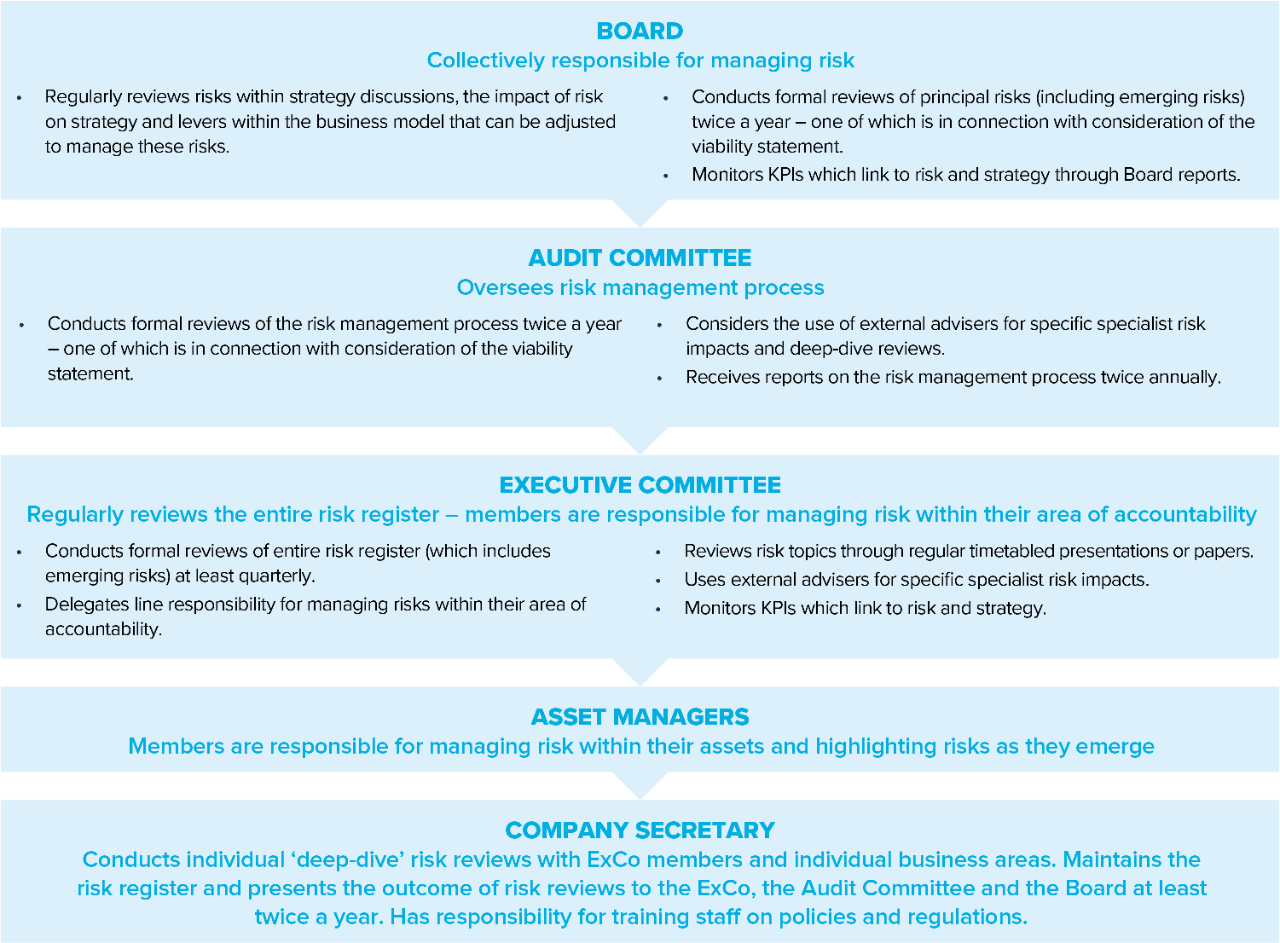About Us
Our Portfolio
Investors
Sustainability
Media
Risk is inherent in all businesses and effective risk management is a key element in the delivery of our strategy and operation of our business model.
The COVID-19 pandemic continued to bring economic and social disruption during FY22, however our culture and strong governance systems and risk mitigation have continued to support the business during the year.
Our small workforce encourages flexibility and collaboration across the business in all areas including risk. The accessibility and flexibility of the Board and senior staff are particularly pertinent when adapting to emerging and external risks such as a global pandemic and geopolitical unrest. This flexibility enables the business to adjust and respond to fast-changing situations and prove its resilience and adaptability.
The Board has ultimate responsibility for the risk management and internal controls of the Company and regularly evaluates our appetite for risk, ensuring our exposure to risk is managed effectively. The Audit Committee monitors the adequacy and effectiveness of the Company’s risk management and internal controls and supports the Board in assessing the risk mitigation processes and procedures. The Executive Committee is closely involved with day-to-day risk management, ensuring that it is embedded within the Company’s culture and values and that there is a delegation of accountability for each risk to senior management.
Risk monitoring and assessment including emerging risks
The identification of risks is a continual process. This has been highlighted more so over the last couple of years with a global pandemic creating uncertainty across all sectors both economically and socially and other geopolitical events impacting supply chains and sentiment. The Company maintains a risk register in which a range of categories are considered. These risks are linked to the business model and strategic priorities of the Company.
The risk register assesses the impact and probability of each identified risk. By identifying all risks on a register and continuously updating this register principal risks can be identified as those that might threaten the Company’s business model, future performance, solvency or liquidity and reputation. Their potential impact and probability will also be a factor in whether they are classed as principal. The risk register also records actions that can be taken to further mitigate the risk and each action is assigned to an individual or group. Mitigation factors and actions are assigned to all risks whether they are principal, non-principal or emerging. The continuous updating of this risk register assists in identifying emerging risks as they develop and ensures that their impact is continually assessed as they emerge and progress. Last year as a result of this continuous assessment of emerging risks we created a new principal risk, ‘Cyber Security’. This year no further emerging risks have been identified or upgraded to principal risk. We have however split the Climate Risk to reflect its constituent parts of Climate change strategy and Climate change impacts on our assets. All risks on the register are ‘scored’ in terms of impact and probability. A risk heat map can be a useful visual aid to understand the potential impact and probability of each significant risk on a gross basis prior to mitigation.
Risk assessment during the year

Details of our Principal Risks can be found in our Annual Report.